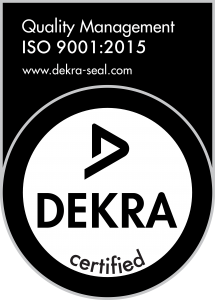860-829-2244
Angeles Town
@angelestown
Profile
Registered: 2 months, 3 weeks ago
The best way to Implement Efficient KYC Management Systems
Know Your Customer (KYC) has turn out to be a fundamental compliance requirement for companies across various industries, especially in finance, fintech, crypto, and banking. Efficient KYC management not only reduces the risk of fraud and money laundering but in addition enhances buyer trust and operational efficiency. Implementing a robust KYC system could seem challenging, however with the right strategy, technology, and processes, it might be streamlined to deliver significant benefits.
What's KYC Management?
KYC management refers to the processes and technologies used by businesses to verify the identity of their clients. It ensures that clients are who they declare to be, mitigating risks associated with identity theft, terrorist financing, and different illicit activities. A well-structured KYC process entails amassing identity documents, screening in opposition to watchlists, performing risk assessments, and continuous monitoring.
Steps to Implement an Efficient KYC System
1. Assess Regulatory Requirements
Step one in implementing a KYC system is understanding the legal and regulatory frameworks that apply to your trade and jurisdiction. These can range significantly between countries and regions. Stay up to date with AML (Anti-Cash Laundering) laws, data privateness laws like GDPR, and sector-particular compliance obligations. This ensures your KYC process meets the mandatory legal standards.
2. Design a Risk-Primarily based Approach
Not all clients pose the same risk. Implement a risk-based KYC model, the place customers are categorized into low, medium, or high risk primarily based on factors such as geographic location, transaction dimension, and nature of the business. This allows you to allocate resources more efficiently, focusing enhanced due diligence on high-risk customers.
3. Automate Identity Verification
Manual verification is time-consuming and prone to error. To speed up onboarding and reduce human error, use automated identity verification tools. These systems can scan and validate government-issued IDs, perform biometric verification, and cross-check data with official databases and global watchlists in real-time.
4. Integrate KYC into Onboarding
KYC should be a seamless part of the customer onboarding process. Integrate your KYC software with your CRM or onboarding platform to avoid duplication and ensure a smooth person experience. Real-time verification enables immediate approvals, reducing drop-off rates and enhancing customer satisfaction.
5. Ensure Data Security and Privateness
KYC includes handling sensitive personal data. Implement robust data encryption, secure storage, and access control policies to protect buyer information. Make certain your KYC systems are compliant with data privacy laws like GDPR or CCPA, depending in your operational regions.
6. Ongoing Monitoring and Updates
KYC will not be a one-time activity. Implement continuous monitoring to detect suspicious activities, modifications in customer habits, or modifications in risk profiles. Periodically replace buyer records and perform refresh cycles based mostly on the assigned risk levels.
7. Use AI and Machine Learning
Advanced applied sciences like AI and machine learning can enhance KYC effectivity by figuring out patterns, automating document recognition, and flagging anomalies. These tools help in reducing false positives and improving the accuracy of risk assessments over time.
8. Train Your Team
A strong KYC system also depends on well-trained personnel. Conduct regular training classes to keep your compliance, assist, and operations teams updated on new regulations, procedures, and technology usage. Ensure everybody understands the importance of compliance and their function in maintaining it.
Benefits of an Efficient KYC System
Faster Buyer Onboarding
Improved Compliance and Lower Regulatory Risk
Reduced Fraud and Identity Theft
Enhanced Buyer Trust and Brand Repute
Operational Cost Financial savings
Final Ideas
Implementing an efficient KYC management system is no longer optional — it’s a necessity in in the present day’s compliance-pushed business world. By leveraging automation, AI, and a risk-based mostly approach, firms can streamline KYC processes, enhance compliance, and provide a smooth experience for their customers. Invest in the best tools and training at this time to build a secure and scalable KYC system for the future.
In the event you loved this short article and you would love to receive much more information with regards to sanctions kindly visit our own web site.
Website: https://kycmanagement.com
Forums
Topics Started: 0
Replies Created: 0
Forum Role: Participant

